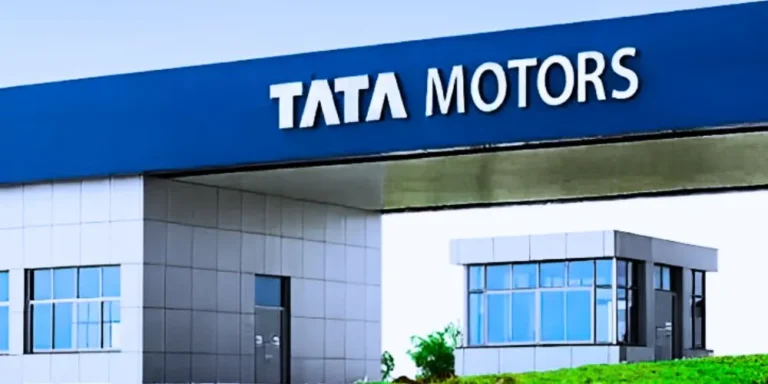Tata Motors Limited, a flagship part of the Tata Group, is one of the largest automobile manufacturers in the world. Known for its innovation, affordability, and sustainability-focused approach, the company has significantly contributed to the global automotive industry. This article explores Tata Motors’ history, milestones, and journey from a domestic manufacturer to an international player.
Founding and Early Vision (1945–1950)
Tata Motors was established in 1945 as Tata Engineering and Locomotive Co. Ltd. (TELCO), focusing initially on manufacturing locomotives and other engineering products. The company was a part of the Tata Group, founded by Jamsetji Tata, with a vision to foster industrial development in India.
Under the leadership of J.R.D. Tata, the company, entered the automotive sector in 1954 through a collaboration with Daimler-Benz of Germany to produce commercial vehicles. This partnership marked the beginning of Tata Motors’ journey in the automotive industry, setting the stage for decades of growth and innovation.
Expansion into Commercial Vehicles (1954–1980)
Tata Motors quickly became a leader in the Indian commercial vehicle market. By the 1960s, the company was producing a wide range of trucks and buses, catering to the growing demands of a developing nation.
In the 1970s, Tata Motors established itself as a significant player in the commercial vehicle segment, focusing on reliability and affordability. The company’s trucks and buses became synonymous with Indian roads, forming the backbone of the country’s transportation network.
Entry into Passenger Vehicles (1988–1990)
The company ventured into the passenger vehicle segment in 1988 with the launch of the Tata Sierra, a multi-utility vehicle (MUV). While initially catering to a niche market, the Sierra demonstrated Tata Motors’ ambition to diversify its offerings.
In 1991, the company launched the Tata Estate, a station wagon that reflected its efforts to innovate in the passenger vehicle market. However, the launch of the Tata Indica in 1998 marked a turning point. The Indica was India’s first passenger car, designed and manufactured entirely in the country, symbolizing Tata Motors’ commitment to Indigenous innovation.
Global Expansion and Acquisitions (2000–2010)
The 2000s marked a period of globalization for Tata Motors. In 2004, the company acquired Daewoo Commercial Vehicles Company in South Korea, expanding its global commercial vehicle market presence.
A landmark moment came in 2008 when Tata Motors acquired the Jaguar and Land Rover (JLR) brands from Ford Motor Company. This acquisition elevated Tata Motors to a global automotive powerhouse, allowing it to compete in the luxury vehicle segment. Despite initial challenges, the JLR acquisition proved a strategic success, significantly boosting the company’s global reputation and revenue.
Launch of the Tata Nano (2009)
In 2009, Tata Motors introduced the Tata Nano, touted as the world’s cheapest car. The Nano was a significant engineering achievement designed to provide affordable mobility for the masses. However, despite its initial hype, the car faced challenges, including safety concerns and marketing missteps, leading to underwhelming sales.
While the Nano failed commercially, it showcased Tata Motors’ innovative capabilities and commitment to addressing societal challenges.
Focus on Sustainability and Electric Vehicles (2010–2020)
In the 2010s, the company embraced sustainability as a core business principle. In 2017, the company launched its first electric vehicle, the Tata Tigor EV, targeting the fleet and commercial segments.
Through Tata Passenger Electric Mobility Limited (a subsidiary established in 2021), Tata Motors expanded its EV lineup, launching models like the Nexon EV and Tiago EV. These vehicles became famous for their affordability, range, and suitability for Indian conditions. The company also invested in renewable energy for its manufacturing processes and adopted circular economy principles to reduce waste and emissions.
Digital Transformation and Connected Vehicles (2020–Present)
Tata Motors has leveraged digital technologies to enhance its product offerings and customer experiences. The company introduced connected vehicle features in models like the Tata Safari and Harrier, incorporating artificial intelligence and the Internet of Things (IoT) to improve safety, convenience, and entertainment.
To strengthen its position in the EV market, the company partnered with Tata Power to establish EV charging infrastructure across India. These initiatives reflect Tata Motors’ commitment to driving India’s transition to sustainable mobility.
Challenges and Resilience
Tata Motors has faced challenges, including fluctuating global demand, intense competition, and supply chain disruptions, particularly during the COVID-19 pandemic. Despite these obstacles, the company demonstrated resilience by focusing on operational efficiency, cost management, and market diversification.
The JLR division has been a significant revenue contributor, although it has occasionally struggled with declining sales in key markets, including China and Europe. Tata Motors has addressed these issues by streamlining production and focusing on next-generation vehicle technologies.
The Future of Tata Motors
The company is poised to play a pivotal role in the global shift toward sustainable transportation. The company aims to increase its EV portfolio, invest in hydrogen fuel cell technology, and explore autonomous driving solutions.
With a strong emphasis on innovation, sustainability, and customer-centricity, Tata Motors is committed to shaping the future of mobility. Its focus on affordable yet advanced vehicle solutions positions it as a key player in emerging markets and beyond.
Conclusion
Tata Motors Limited’s evolution from a locomotive manufacturer to a global automotive leader exemplifies its ability to adapt and innovate. The company has cemented its position in the automotive industry through strategic acquisitions, a focus on sustainability, and an unwavering commitment to its customers.
As it navigates the future, Tata Motors continues to embody the spirit of its parent company, Tata Group, leveraging technology and innovation to create meaningful solutions for people worldwide.





